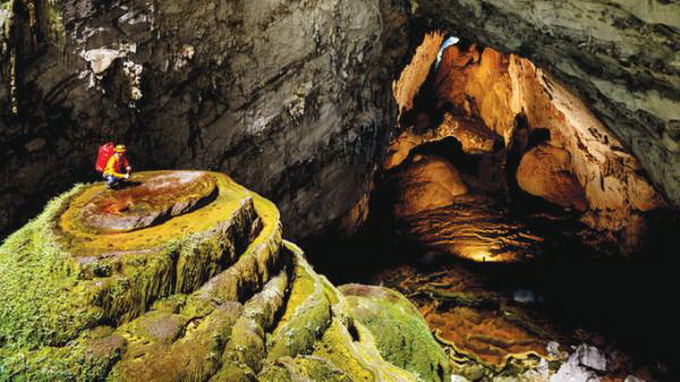If the green light is given to the construction of a cable car system to Son Doong Cave - the world’s current largest - in UNESCO-recognized Phong Nha- Ke Bang National Park, the central province of Quang Binh is expected to welcome far more tourists than at present.
However, the choice to build or not to build the system is also a choice for the immediate and long-term promotion of the world-class heritage site.
Unique destination Son Doong Cave is currently the largest, most majestic in the world, and can be considered a world-class brand for Vietnam’s tourism industry.
Currently, tourism agency Oxalis is the sole agency licensed by the authorities of the central province to bring tourists to the cave with strict requirements: only six tourists are allowed on each tour, but they are supported by a team of 18, including porters, cooks, guides and experts.
A 7-day, 6-night tour into the cave costs $3,000, and Oxalis has held tours for a maximum of about 240 people each year, and the bookings for 2015 are already full.
The cave is a unique part of the Vietnam tourism industry, and it is proving popular. According to Nguyen Cong Hoan, Deputy General Director of Hanoi Redtour, visitors cannot discover Son Doong on a whim, as they have to wait a long time just to book a spot on a tour.
A Son Doong Cave tour is the dream, the aspiration and the destination of many international tourists who want to experience the feeling of conquering nature and challenges, he added.
However, with a limited number of guests fixed every year, Son Doong can only bring in about VND1.5 billion in cash for the local budget, a small figure compared to the reputation of other world-class heritage sites in Vietnam, especially Halong Bay in the northern province of Quang Ninh and the central city of Hue’s Imperial City.
Therefore it is understandable that Quang Binh Province is proposing the cable car system to raise the number of tourists from only 240 visitors per year to hundreds of thousands and even millions.
With a potential flood of new tourists, there will be more jobs for locals, thus improving the quality of life of people associated with heritage conservation and making use of the potential of the site for the development of the local economy.
However, can this approach be considered the biggest goal, as Vietnam’s tourism development is already past the point of overexploitation? Is sustainable development still possible in mass tourism?
Let the appeal last forever
The development of Vietnam's tourism has shown there is more harm than good to the growth of mass tourism, which means attracting as many tourists as possible. Numerous destinations have been nearly ruined thanks to the flood of people, and many local travel agencies worry that the same scenario will take place at Son Doong once the old approach is applied there.
Hoan, from Hanoi Redtour, told chinhphu.vn that the appeal of Son Doong stems from its natural beauty and unique nature. So, abandoning its strengths in exchange for immediate profit is not a wise way to sustainably develop tourism.
"As far as I know no detailed studies of Son Doong’s ecology and geology have been released. Therefore, we should not fully exploit it without fully understanding. We should create plans for effective and reasonable exploitation and conservation,"Hoan said .
Mr. Nguyen Van Tan, CEO of TBT-TNT joint venture, which specializes in operating tours in Vietnam for Japanese tourists, told chinhphu.vn that the mystery of Son Doong is attractive. If this element is destroyed as a consequence of mass tourism, it will lead to a decline in international tourists, and also have a negative effect on efforts to build the image of hidden beauty in Vietnam.
"Maybe the cable car system, if realized, will attract more tourists and more revenue to Quang Binh, but the brands of Son Doong and Phong Nha-Ke Bang could lose their prestige through catastrophic environmental impacts,” Nguyen Van My, from the Vietnam Travel Association, told chinhphu.vn.
According to Tran Hoang Mai, Deputy Director-General of the Department of Cultural Diplomacy and UNESCO Affairs of the Ministry of Foreign Affairs, UNESCO is considering withdrawing the World Heritage title of many international heritages as the host countries have not complied with commitments under the Convention on the Heritage of UNESCO.
This can even affect the review process and recognition of other heritage sites in the countries currently violating their commitments, she added.
Like us on Facebook or follow us on Twitter to get the latest news about Vietnam!


















































